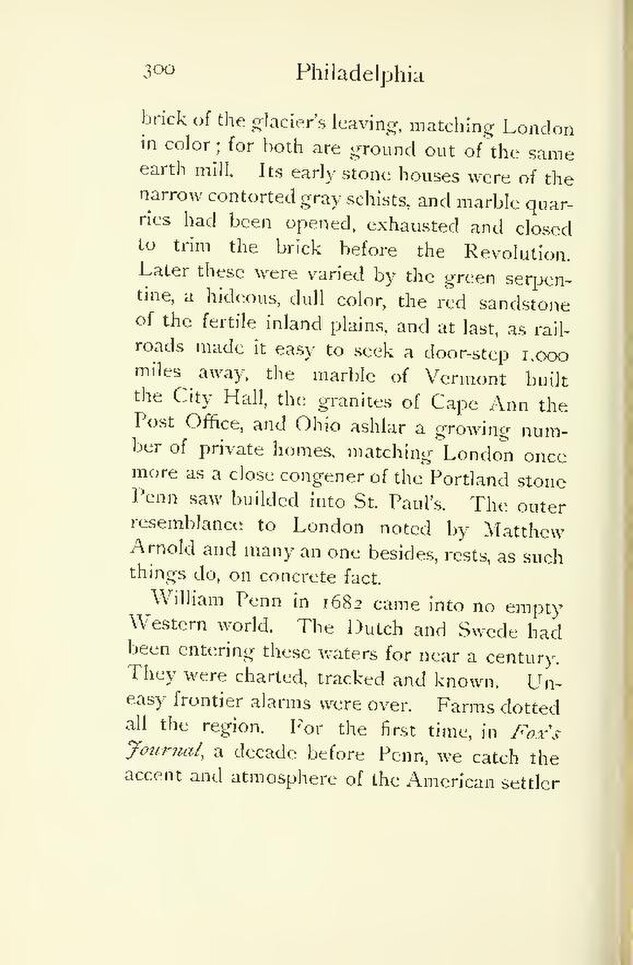brick of the glacier's leaving, matching London in color; for both are ground out of the same earth mill. Its early stone houses were of the narrow contorted gray schists, and marble quarries had been opened, exhausted and closed to trim the brick before the Revolution. Later these were varied by the green serpentine, a hideous, dull color, the red sandstone of the fertile inland plains, and at last, as railroads made it easy to seek a door-step 1,000 miles away, the marble of Vermont built the City Hall, the granites of Cape Ann the Post Office, and Ohio ashlar a growing number of private homes, matching London once more as a close congener of the Portland stone Penn saw builded into St. Paul's. The outer resemblance to London noted by Matthew Arnold and many an one besides, rests, as such things do, on concrete fact.
William Penn in 1682 came into no empty Western world. The Dutch and Swede had been entering these waters for near a century. They were charted, tracked and known. Uneasy frontier alarms were over. Farms dotted all the region. For the first time, in Fox's Journal, a decade before Penn, we catch the accent and atmosphere of the American settler
